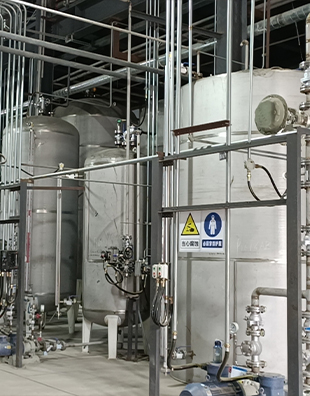amino tri methylene phosphonic acid
Amino Tri Methylene Phosphonic Acid An Overview
Amino tri methylene phosphonic acid (ATMPA) is a phosphonic acid derivative that has garnered considerable attention in various industrial and environmental applications
. As a water-soluble chelating agent, ATMPA possesses unique properties that make it invaluable in sectors such as water treatment, agriculture, and even in the oil and gas industry.Chemically, ATMPA is characterized by its amino and phosphonic functional groups, which contribute to its effectiveness as a chelating agent. Its structure allows it to form stable complexes with metal ions, thus preventing scale formation and enhancing the efficiency of processes where metal ions might otherwise cause undesirable effects. This property is particularly important in water treatment, where ATMPA is used to control the solubility of hardness ions like calcium and magnesium, mitigating the risk of scale deposits in pipes and equipment.
In the realm of industrial applications, ATMPA is frequently utilized as a scale inhibitor in cooling water systems and boilers. By chelating metal ions, it helps maintain the efficiency of heat exchangers and reduces the maintenance costs associated with scale removal. Its effectiveness is not limited to water treatment; it also finds uses in various detergents and cleaning agents, where it enhances cleaning efficiency by softening hard water.
amino tri methylene phosphonic acid

Moreover, ATMPA's role extends beyond industrial applications; in agriculture, it is employed as a fertilizer additive. By chelating micronutrients such as iron and manganese, ATMPA improves nutrient availability to crops. This is crucial in promoting healthy plant growth, particularly in soils with high pH levels where certain nutrients can become less available.
The environmental impact of ATMPA is another important aspect to consider. Due to its chelating abilities, ATMPA can also aid in the treatment of wastewater, binding to heavy metals and facilitating their removal. This property is particularly beneficial in addressing pollution and ensuring that discharged water complies with environmental regulations.
Safety and toxicity are significant concerns when using any chemical compound. Studies have indicated that ATMPA generally exhibits low toxicity, making it a safer alternative compared to other phosphonate compounds. However, as with any chemical, it is essential to follow proper handling procedures and ensure that it is used within recommended limits to mitigate any potential environmental impact.
In conclusion, amino tri methylene phosphonic acid stands out as a versatile compound with a wide range of industrial, agricultural, and environmental applications. Its ability to effectively chelate metal ions makes it a valuable asset in water treatment, agricultural enhancement, and pollution control. As industries continue to seek environmentally friendly solutions, the significance of compounds like ATMPA will only grow, highlighting the importance of ongoing research and development in this field. Understanding its properties and applications can lead to more effective and sustainable practices across various sectors.
-
Water Treatment with Flocculant Water TreatmentNewsJun.12,2025
-
Polymaleic AnhydrideNewsJun.12,2025
-
Polyaspartic AcidNewsJun.12,2025
-
Enhance Industrial Processes with IsothiazolinonesNewsJun.12,2025
-
Enhance Industrial Processes with PBTCA SolutionsNewsJun.12,2025
-
Dodecyldimethylbenzylammonium Chloride SolutionsNewsJun.12,2025





